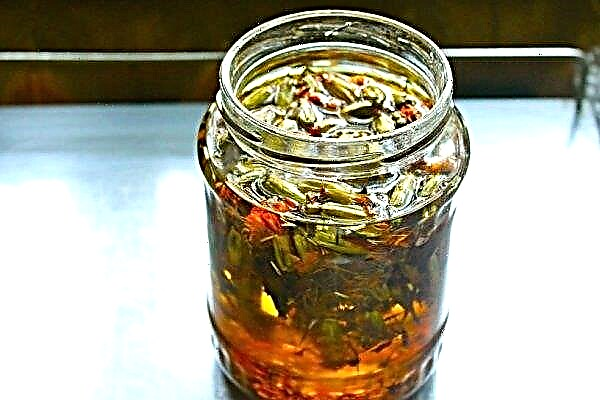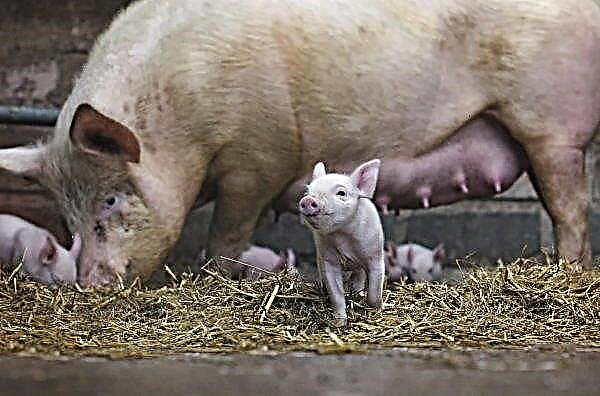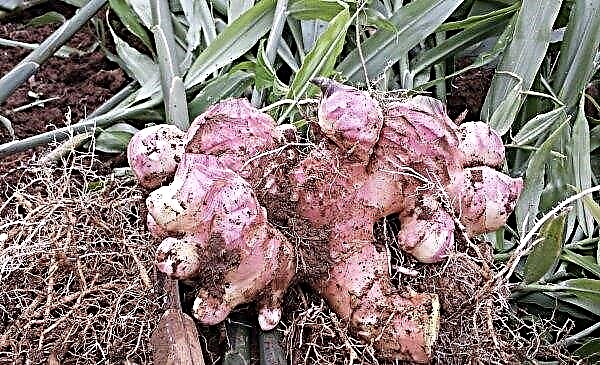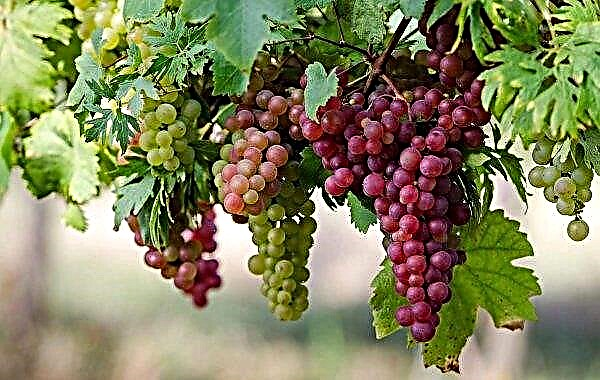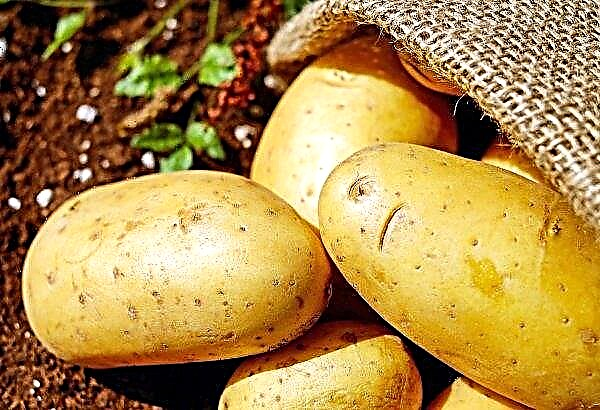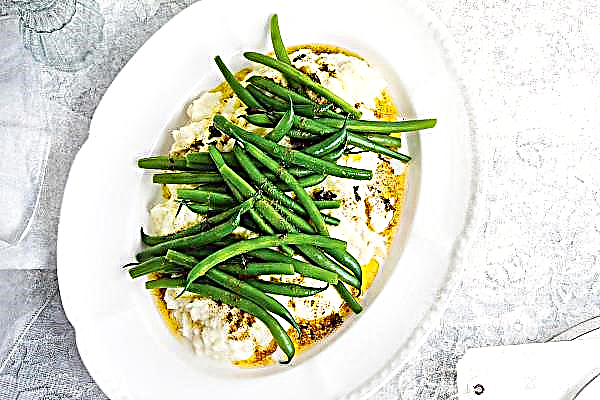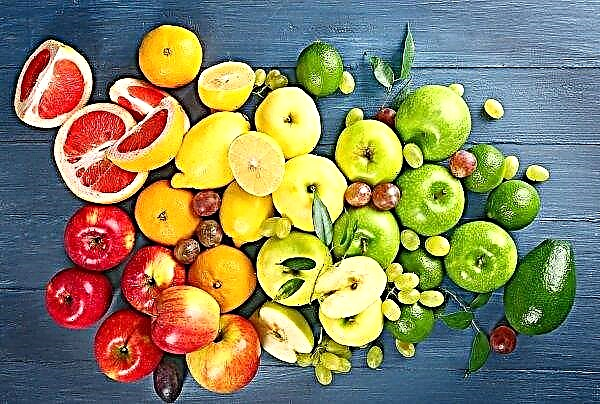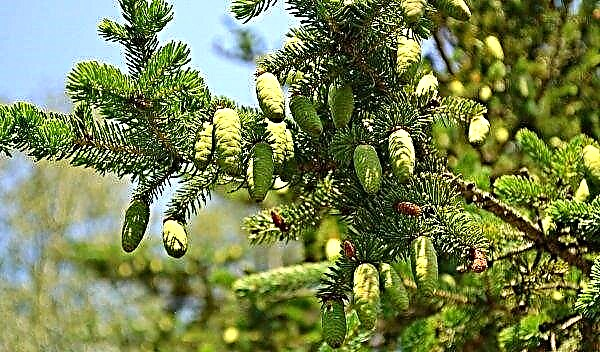A special variety of legumes is asparagus beans. Juicy, delicate, crisp pods fell in love with gourmets of different countries for the versatility of their application, as well as due to the presence of many useful properties. In addition, this dietary product is easy to grow in the country. Consider the features of this culture, the types of its varieties, as well as how to properly grow and harvest.
Description and characterization of varieties
Asparagus beans differ in pod weight, yield indicators, color and length of the shoulder blade, varieties, ripening dates.
The plant can be different in the form of growth:
- bush;
- stunt curly;
- curly.

We bring to your attention a description of the best and most popular varieties of asparagus beans, depending on the harvest.
Early Asparagus Beans
The difference between asparagus and ordinary beans is that it grows without coarse fibers, which complicate its preparation in cooking. The difficulty in collecting early bean varieties is not to miss the moment when the pods are ripe. Some types of culture, when systematically harvested, are able to continue flowering and the formation of a new crop.
Blue Lake
Curly species of plants, which can reach 2 m in height. The first beans are plucked on the 50–55th day after emergence. The bluish-green shovel can grow up to 16 cm. From one plant, you can harvest in 600-650 g.

Fedoseevna
A bushy variety of beans, which is distinguished by high palatability of beans. The first blades are harvested 46–50 days after sowing; the plant has a high ability to produce a second crop. Light green beans often exceed a length of 20 cm. This variety is suitable for cooking various dishes in cooking, canning and freezing. Productivity - 2 kg / 1 m².

Shade on the fence
A high-yielding winding plant variety, the first crop of which is removed on the 45-50th day after the first seedlings. The light green pod has a slightly curved shape, its length is 16–21 cm, its width is 1 cm. Universal variety. Productivity - up to 4 kg / 1 m².
Gait
A compact bush capable of forming many fleshy, strong and elastic pods of dark green color. The crop yield is up to 3 kg / 1 m², the first blades are torn off on the 50th day after sowing in the ground. Mostly used in cooking.
Did you know? The name of the culture comes from the Greek word φασεολος (faceus), which means «long narrow boat».
Varieties of medium ripening
By the average ripening period belongs most of the varieties of asparagus beans.
Earring
A winding type of crop whose beans are distinguished by excellent taste and nutritional qualities. The shoulder blades are straight, light green in color, up to 21 cm long and up to 3 cm wide. Earring is a high-yielding universal variety. Productivity - up to 3.5 kg / 1 m².

Sissy
A winding culture with delicate beans of an excellent creamy taste. The first shoulder blades ripen on the 70–75th day after emergence. The pod is curved, long, yellow, contains many vitamins and mineral salts. Universal to use. Productivity - up to 1.5 kg / 1 m².
Anniversary
Shrub small plant, whose height is not more than 35 cm. The variety was bred thanks to the efforts of Siberian breeders. The first shoulder blades ripen on the 55–65th day after emergence. The taste and nutritional qualities of beans are rated very highly. The yellow blades are decorated with a purple hue. Productivity - up to 2.5 kg / 1 m². The jubilee variety compares favorably with high resistance to adverse weather conditions.
Purple queen
Shrub compact plant, the height of which does not exceed 40 cm. On the bush grows up to 16 pods. Large, dense, juicy shoulder blades are painted in a noble ink blue color, the shoulder blades do not grow longer than 14 cm.
The taste of the bean is sweetish, thanks to this it can be used in fresh salads. During heat treatment, the beans lose their original color and become simply green. Beans ripen on the 63rd day after the appearance of the first seedlings. Productivity - 3 kg / 1 m².
Did you know? Residents of the UK call beans "Dutch beans", because they learned about this culture from the Dutch.
Late grades
Later varieties are grown in the southern regions, which are famous for their long and warm summers.
Beronia
The plant is tall. The ripening period of the pods falls on the 90th day from the moment the first seedlings appear. Green blades grow up to 22 cm long and their width can reach 2.5 cm. Productivity - 1.7 kg / 1 m².

Xera
Shrub variety, small in size, resistant to viruses. Beans are harvested on the 75–85th day after emergence. Medium-sized shoulder blades, painted in light green, ripen together. Productivity - 2 kg / 1 m².
Hope
A compact bush capable of forming many fleshy, strong and elastic beans of a saturated dark green color, medium size. The yield of the variety is about 2.2 kg / 1 m², the first blades are harvested on the 80th day after planting. The main use of this variety is in cooking.

The main rules for sowing seeds for seedlings
Asparagus beans are sown immediately in open ground or planted in the form of seedlings in those days, as soon as the threat of frost and sudden temperature jumps passes. In the southern regions, legumes are sown in early May, in other regions they are weather-oriented (the central ones in the twentieth of May, the northern ones in the first ten days of June).
For plant growth, it is necessary that the earth is sufficiently warmed up - more than + 15 ° С. If lower temperatures are expected, then plantings must be covered with covering material.
Important! To speed up the process of germination of beans, before planting, its seeds are soaked for a day in water. Thus, the seed coat will soften, become softer, and the germ will easily break its way.
Disembarkation and further care
Before planting a crop on your site, you need to prepare the soil for it: dig it up, clean it from the remains of previous crops, and feed it. For asparagus beans, a light, loose, non-acidic soil is suitable.
Seeds are laid in grooves to a depth of about 6 cm, leaving a distance of 15–20 cm between them and 30–60 cm between rows. This scheme will ensure active crop growth and increase fruiting. If the planting pattern is violated, the care of the plants will become more complicated, and fungal diseases often develop in thickened plantings.
Seeds of climbing varieties are best sown immediately near the supporting posts in the holes. Seeds are covered with soil, compacted with their feet, well watered. When the sprouts reach a height of 10 cm, the space around them is cleaned of weeds, and the plant itself is spudded.
The roots of this culture are located close to the surface, therefore, on hot days, legumes need good watering, which is carried out under the root in a large volume. It is advisable to mulch the earth: so the moisture will be well preserved, and weeds will be less annoying.
 When the sprouts are not less than 10 cm in height, they must be carefully directed to the supports.
When the sprouts are not less than 10 cm in height, they must be carefully directed to the supports.
Harvesting, transportability and storage
Asparagus beans ripen, depending on the variety: early - on average 40-50 days after emergence, medium - about 70-80 days, late - after 90-100 days. The timely collection of beans will lead to the emergence of new ovaries and, as a result, an increase in yield.
Harvesting bean blades occurs during the period of milk ripeness, until they have become solid. Inspection of the bushes to identify ripened fruits must be carried out daily, and best of all in the first half of the day, when the pod is saturated with moisture and it is less likely that it will open.

Asparagus beans are not stored for long - only 2-3 days, after which it loses moisture and becomes stiff. Beans can be stored in the refrigerator for 7–10 days at temperature indicators in the range of +4 ... + 7 ° С. As a rule, the fruits are picked in order to immediately eat them, and they can also be prepared for future use by conservation or by freezing.
The transportability of the culture is quite low (due to the short storage), except perhaps only to the place of processing. Seeds intended for subsequent planting should be well dried. They are placed in glass containers (to protect against insects) and stored for a long time: up to 5 years.
A variety of varieties of asparagus beans gives you the opportunity to choose: some plants can share the crop twice a season if weather conditions permit, while others have a ripening process even longer, but the yield is higher and there are more useful substances in the fruits.



